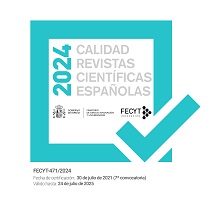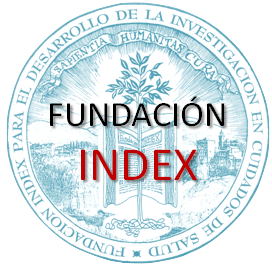Confirmatory factor analysis of the safety attitudes questionnaire/operating room
Abstract
Objective: To analyze the factor structure of the version of the Safety Attitudes Questionnaire/Operating Room Version that has been translated and culturally adapted to the Brazilian context.
Method: This was a methodological study about a questionnaire. The questionnaire was administered to 412 health professionals who worked in operating rooms. The factor structure was tested with confirmatory factor analysis (CFA) and Cronbach's alpha. Results: The total score for Cronbach's alpha was 0.912; and the scores for the domains ranged from 0.56 and 0.85. The domain with the worst performance was communication in the surgical setting.
The results of CFA showed that the score for SRMR was 0.052, RMSEA, 0.031, and CFI, 0.95. These scores indicate the reliability and acceptability of the Brazilian adaptation of the questionnaire. Conclusion: The factor structure demonstrated the validity and reliability of the Brazilian version of the questionnaire for measuring the patient safety climate as perceived by healthcare professionals who worked in surgical settings
Downloads
-
Abstract718
-
PDF (Español (España))738
-
PDF (Português )738
-
PDF738
References
Couto RC, Pedrosa TMG, Roberto BAD, Daibert PB. Anuário da segurança assistencial hospitalar no Brasil. UFMG, 2017. [Internet]. [citado 2018 jan. 27]. Disponível em: https://www.caism.unicamp.br/PDF/ASAH.pdf
The Health Foundation. Evidence Center. Measuring safety culture. London: The Health Foundation, 2011. [Internet]. [cited 2016 Jan. 25]. Available from: http://www.health.org.uk/publications/measuring-safety-culture/.
Brasil. Ministério da Saúde; Fundação Oswaldo Cruz; Agência Nacional de Vigilância Sanitária. Documento de referência para o Programa Nacional de Segurança do Paciente [Internet]. Brasília: Ministério da Saúde; 2014. [citado 2016 Jan. 27]. Disponível em: http://bvsms.saude.gov.br/bvs/publicacoes/documento_referencia_programa_nacional_seguranca.pdf
Weiser TG, Haynes, AB, Molina G, Lipsitz SR, Esquivel MM, et al. Estimate of the global volume of surgery in 2012: an assessment supporting improved health outcomes. The Lancet [Internet]. 2015 [cited 2015 Nov. 10];385(S11). Available from: http://www.thelancet.com/pdfs/journals/lancet/PIIS0140-6736(15)60806-6.pdf
Organização Mundial da Saúde. Segundo desafio global para a segurança do paciente: Cirurgias seguras salvam vidas (orientações para cirurgia segura da OMS). Trad. de Marcela Sánchez Nilo e Irma Angélica Durán. Rio de Janeiro: Organização Pan-Americana da Saúde; Ministério da Saúde; Agência Nacional de Vigilância Sanitária, 2009. 211 p.
Fragata JIG. Erros e acidentes no bloco operatório: revisão do estado da arte. Rev Port Saúde Pública [Internet]. 2010 [cited 2015 Dez. 10];Vol Temat(10):17-26. Available from: www.ensp.unl.pt/dispositivos-de-apoio/cdi/cdi/sector-de-publicacoes/revista/2010/pdf/volume-tematico-seguranca-do-doente/3-Erros%20e%20acidentes%20no%20bloco%20operatorio.pdf.
Moura MLO, Mendes W. Avaliação de eventos adversos cirúrgicos em hospitais do Rio de Janeiro. Rev Bras Epidemiol [Internet]. 2012 [citado 2015 Dez. 10]; 15(3): 523-35. Disponível em: http://www.scielo.br/pdf/rbepid/v15n3/07.pdf.
Flin R. Measuring safety culture in healthcare: A case for accurate diagnosis. Saf Sci. 2007; 45: 653–667.
Epstein J, Santo RM, Guillemin F. A review of guidelines for cross-cultural adaptation of questionnaires could not bring out a consensus. J Clin Epidemiol. [Internet]. 2015 [cited 2016 May 24]; 68(4):435-41. Available from: http://www.ncbi.nlm.nih.gov/pubmed/25698408.
Maroco J, Garcia-Marques T. Qual a fiabilidade do alfa de Cronbach? Questões antigas e soluções modernas? Laboratório de Psicologia. [Internet]. 2006 [cited 2016 Mar. 21]; 4(1): 65-90. Available from: http://repositorio.ispa.pt/bitstream/10400.12/133/1/LP%204(1)%20-%2065-90.pdf.
Hair JF Jr, Black WC, Babin BJ, Anderson RE, Tatham RL. Análise multivariada de dados. Trad. de Adonai Sclup Sant"Anna. 6ªed. Porto Alegre: Bookman; 2009.
Sexton JB, Thomas EJ. The Safety Attitude Questionnaire (SAQ) Guidelines for Administration. Technical Report 03-02. The University of Texas Center of Excellence for Patient Safety Research and Practice, [Internet] June 11 2003 [cited 2013 Jan 10]. Available from: http://www.nationalpatientsafetyfoundation.org/wp-content/uploads/2011/10/RG_SUPS_Sharing_Mod3_Sexton.pdf.
Zimmermann N, Küng K, Sereika SM, Engberg S, Sexton B, Schwendimann R. Assessing the safety attitudes questionnaire (SAQ), German language version in Swiss university hospitals - a validation study. BMC Health Services Research [Internet] 2013 [cited 2014 Jan.10];13:347. Available from: http://www.biomedcentral.com/1472-6963/13/347#.
Deikås E, Hofoss D. Psychometric properties of the Norwegian version of the Safety Attitudes Questionnaire (SAQ), Generic version (short form 2006). BMC Health Serv Res [Internet]. 2008 [cited 2013 Jan. 29];8:191-198. Available from: http://www.orgsun.com/1/18/62634-1-operating-room-version-safety-attitudes-questionnaire-analysis-using.php.
Kaya S, Barsbay S, Karabulut E. The Turkish Version of the safety attitude questionnaire: psychometric properties and baseline data. Qual Saf Health Care. [Internet]. 2010 [cited 2013 Jan. 28]; 19:572-577. Available from: http://www.ncbi.nlm.nih.gov/pubmed/20671082.
Lee WC, Wung HY, Liao HH, Lo CM, Chang FL, Wang PC, et al. Hospital safety culture in Taiwan: A nationwide survey using chinese version safety attitude questionnaire. BMC Health Serv Res. [Internet]. 2010 [cited 2013 Jan. 28]; 10: 234-242. Available from: http://www.biomedcentral.com/1472-6963/10/234.
Nordén-Hägg A, Sexton JB, Kälvernark-Sporrong S, Ring L, Kettis-Lindblad A. Assessing safety culture in Pharmacies: The psychometrics validation of the Safety Attitudes Questionnaire (SAQ) in a national sample of community pharmacies in Sweden. BMC Clin Pharmacol. [Internet]. 2010 [cited 2013 Jan. 28];10:8-20. Available from: http://www.biomedcentral.com/1472-6904/10/8.
Kristensen S, Sabroe S, Bartels P, Mainz J, Christensen KB. Adaption and validation of the Safety Attitudes Questionnaire for the Danish hospital setting. Clin Epidemiol [Internet]. 2015 [cited 2015 Mar. 01];7: 149–160. Available from: http://www.dovepress.com/adaption-and-validation-of-the-safety-attitudes-questionnaire-for-the--peer-reviewed-fulltext-article-CLEP. DOI: 10.2147/CLEP.S75560.
Raftopoulos V, Pavlakis A. Safety climate in 5 intensive care units: A nationwide hospital survey using the Greek-Cypriot version of the Safety Attitudes Questionnaire. J Crit Care. 2013; 28: 51–61.
Makary, MA; Sexton JB, Freischlag JA, Millman A, Pryor D, Holzmueller C, Pronovost PJ. Patient Safety in Surgery. Ann Surg. [Internet]. 2006 [cited 2015 Jan. 29]; May; 243(5): 628–635. Available from: http://www.ncbi.nlm.nih.gov/pmc/articles/PMC1570547/.
Göras C, Wallentin FY, Nilsson U, Ehrenberg A. Swedish translation and psychometric testing of the safety attitudes questionnaire (operation room version). BMC Health Serv Res. [Internet]. 2013 [cited 2015 Jan 28]; 13: 104 - 111. Available from: http://www.biomedcentral.com/content/pdf/1472-6963-13-104.pdf.
Kawano T, Taniwaki M, Ogata K, Sakamoto M, Yokoyama M. Improvement of teamwork and safety climate following implementation of the WHO surgical safety checklist at a university hospital in Japan. J Anesth [Internet]. 2014 [acesso em:10 Jan 2015]; 28:467–470. Disponível em: http://www.ncbi.nlm.nih.gov/pubmed/24170220.
Pinheiro JPA, Uva AS. Safety climate in the operating room: Translation,
validation and application of the Safety Attitudes
Questionnaire. Rev Port Saúde Pública [Internet]. 2 0 1 6 [cited 2017 Nov. 29]; 34(2):107–116. Available from: http://www.elsevier.pt/en/revistas/revista-portuguesa-saude-publica-323/pdf/S0870902515000474/S300/
Lourenção DCA, Tronchin DMR. Segurança do paciente no ambiente cirúrgico: tradução e adaptação cultural de instrumento validado. Acta paul. enferm. [Internet]. 2016 Fev [acesso em: 12 Nov 2017] ; 29( 1 ): 1-8. Disponível em: http://www.scielo.br/scielo.php?script=sci_arttext&pid=S0103-21002016000100002&lng=pt. http://dx.doi.org/10.1590/1982-0194201600002.
Lourenção DCA. Adaptação transcultural e validação do Safety Attitudes Questionnaire/Operating Room Version para o contexto brasileiro. [Tese]. São Paulo: Escola de Enfermagem, Universidade de São Paulo, 2015.
Pasquali L. Psicometria: Teoria dos testes na Psicologia e na Educação. Petrópolis. Ed. Vozes, 2ª ed. 2009.
Laros JA. O uso da Análise Fatorial: Algumas diretrizes para pesquisadores. In: Pasquali L. Análise fatorial para pesquisadores. Brasília: Publisher; [Internet] 2005. p.141-160. [citado 2015 May. 06]. Disponível em: https://www.researchgate.net/publication/233735561_O_Uso_da_Analise_Fatorial_Algumas_Diretrizes_para_Pesquisadores
Scheffer M, coordenador. Demografia médica no Brasil: dados gerais e descrição de desigualdades [Internet]. São Paulo: CREMESP/CFM; 2011. v. 1. [citado 2016 mar. 08]. Disponível em: http://www.cremesp.org.br/pdfs/demografia_2_dezembro.pdf
Terwee CB, Bot SDM, Boer MR, van der Windt DAWM, Knol DL, Dekker J, et al.. Quality criteria were proposed for measurement properties of health status questionnaires. J Clin Epidemiol [Internet]. 2007 [cited 2016 Fev. 25]; 60:34-42. Available from: http://www.ncbi.nlm.nih.gov/pubmed/17161752.
Hu L, Bentler PM. Cutoff criteria for fit indexes in covariance structure analysis: Conventional criteria versus new alternatives. Structural Equation Modeling: A Multidisciplinary Journal. [Internet]. 2009 [cited 2017 Nov. 25]; 6 (1): 1–55. Available from: https://www.tandfonline.com/doi/abs/10.1080/10705519909540118
The works published in this magazine are subject to the following terms:
1. The Publications Service of the University of Murcia (the publisher) preserves the copyright of the published works, and encourages and allows the reuse of the works under the license for use stated in point 2.
© Servicio de Publicaciones, Universidad de Murcia, 2011 (© Publications Service, University of Murcia, 2011)
2. The works are published in the electronic edition of the journal under Creative Commons Reconocimiento-NoComercial-SinObraDerivada 3.0 España(texto legal) “ a Attribution-NonCommercial-NoDerivatives 3.0 Spain license (legal text)”. They can be copied, used, broadcasted, transmitted and publicly displayed, provided that: i) the authorship and original source of their publication (journal, publisher and URL) are cited; (ii) are not used for commercial purposes; iii) the existence and specifications of this license is mentioned.
3. Conditions of self-archiving. Authors are allowed and encouraged to electronically disseminate the pre-print (pre-reviewed ) and / or post-print (reviewed and accepted for publication) versions of their works prior to publication, as it ensures a wider circulation and dissemination which may lead to a possible increase in its mention and a higher scope among the academic community. RoMEO color: green.












